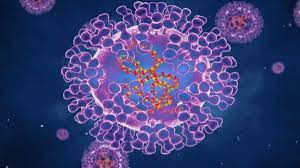The genetic sequencing of samples from the first two cases of monkeypox reported in India earlier this month revealed that the strain circulating in the nation is distinct from those linked to the’super-spreader’ events identified in Europe.
This implies that a distinct strain of the virus has been quietly spreading across the worldwide population since at least 2021.
Scientists from the Indian Council of Medical Research-National Institute of Virology (ICMR-NIV) in Pune have uploaded the genetic sequences of the monkeypox virus to GISAID, a worldwide scientific project for researchers. ThePrint has obtained the information.
At the moment, the bulk of the approximately 20,000 monkeypox cases dispersed over 75 nations are thought to have occurred as a result of super-spreader events in Europe, with the majority of them, detected in 2022, belonging to the strain dubbed ‘B.1.’
However, a limited number of cases from throughout the world appear to be from a distinct strain known as ‘A.2’.
CSIR-IGIB (Council of Scientific and Industrial Research-Institute of Genomics and Integrative Biology) genomic experts told ThePrint that just a few samples sequenced so far correspond to the A.2 cluster, with the earliest genomes going back to 2021.
Vinod Scaria, a renowned genomic scientist at IGIB, stated on Twitter that the A.2 genomes are from the United States and Thailand, and do not appear to have arisen from any occurrences in Europe.
He went on to note that the two genomes identified in Kerala belong to this small distinct A.2 cluster. “We might be looking at a distinct cluster of human-human transmission and possibly unrecognised for years (sic),” he said.
Scaria also pointed out that the few cases that belong to the A.2 strain — including the ones from India — seem to all have travel links to the Middle East or West Africa.
“The earliest sample in the cluster from USA is indeed from 2021 suggesting the virus has been in circulation for quite some time, and earlier than the European events,” he added.
Last month, genetic evidence from the United States indicated that at least two independent monkeypox epidemics are occurring at the same time.
The A.2 variety may have been quietly spreading in the worldwide population for some time and is only now being recognised as a result of the European monkeypox outbreak.

